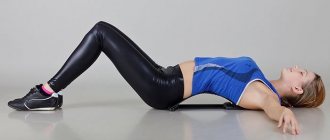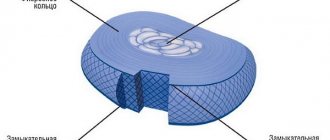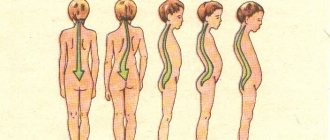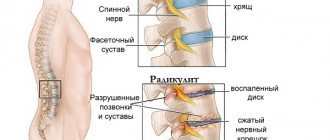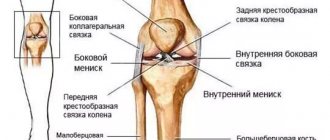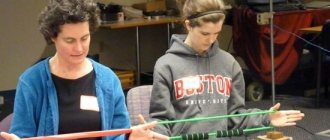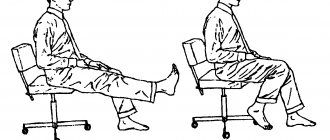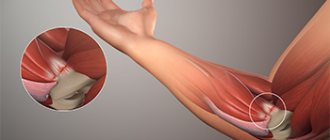A sedentary lifestyle is the scourge of our time. Lack of movement provokes the development of a huge number of diseases, among which the leading positions are occupied by pathologies of the musculoskeletal system and especially the spine. The disorders progress slowly and initially do not manifest themselves in any way. The first symptoms usually occur when the disease has already led to significant changes requiring immediate medical intervention.
As part of the conservative treatment of spinal diseases and the prevention of their development, people are often prescribed physical therapy or exercise therapy. Often it is one of the components of complex treatment and is complemented by physiotherapy, manual therapy and drug treatment.
What is exercise therapy
Therapeutic exercise involves an individually selected set of exercises to prevent the development of degenerative-dystrophic processes in the spine or stop the progression of existing ones. Exercise therapy classes are simple, accessible to people of any age, do not require much time and can usually be performed at home.
Patients are prescribed a set of exercises selected in accordance with their age, type and characteristics of the disease, level of general physical fitness and a number of other factors. Depending on the goals pursued, all recommended exercises can be divided into 3 groups:
- for decompression – they involve stretching the spine in order to increase the spaces between the vertebrae and eliminate the pressure of anatomical structures on the nerve endings;
- to increase mobility - aimed at increasing the flexibility of the spine, reducing the likelihood of strangulation of hernias, nerves and blood vessels, as well as eliminating muscle spasm;
- to strengthen the muscular-ligamentous apparatus - help to increase muscle strength and strengthen the muscle corset, which can create reliable support for the spine and reduce the load on it.
Therapeutic exercise is useful both for a completely healthy person and for people who have already been diagnosed with a particular spinal disease. In all cases, it is called upon:
- eliminate or at least reduce back pain resulting from compression of the nerve roots;
- strengthen the muscle corset;
- eliminate increased pressure of the vertebrae on the intervertebral discs;
- accelerate the course of metabolic processes and regeneration processes of cartilage tissue and bones;
- eliminate mobility restrictions;
- speed up recovery after injuries and surgeries;
- improve posture.
In addition, regular physical therapy exercises will help relieve stress, improve mood, concentration, performance and give you energy for the whole day.
Postoperative recovery with exercise therapy
After surgery, a complex of physical therapy is necessary to restore the functions of the musculoskeletal system and accelerate the tissue healing process. Surgery on the spine or joints is an absolute indication for exercise therapy. In this case, initially patients are given a minimal load, which gradually increases as they recover. The quality of rehabilitation directly depends on how correctly and regularly the patient engages in physical exercises, so exercise therapy is carried out by a qualified specialist with a medical education - a kinesiotherapist.
Gradually increasing the load allows you to strengthen the muscular-ligamentous apparatus without overload and as carefully as possible in relation to the body weakened by the disease. This approach is relevant for patients who have undergone spinal surgery (gradual strengthening of the back muscles provides the spine with the required support) and for those who have had joints surgically treated (during recovery, muscle tissue gradually atrophies, so rehabilitation allows you to restore its tone). Thanks to the special decompression simulators that our clinic is equipped with, during exercise the load on the joints and spine is minimized and the risk of cartilage abrasion is eliminated. The load on such simulators is distributed pointwise and allows you to tone your muscles in the safest way!
In cases where surgery was performed on internal organs, many patients may find physical activity to be an additional risk factor. As practice shows, a set of special exercise therapy allows you to stimulate metabolism and increase the efficiency of the rehabilitation process, accelerating the recovery of the body. Prolonged lying in a supine position leads to weakening of the muscle corset, so physical therapy is necessary in order to return motor activity to its previous level. But, of course, any physical activity should be agreed upon with your doctor.
General recommendations for exercise therapy classes
For each patient, a set of exercises is developed individually by the doctor and may include exercises taken from different techniques. It is impossible to independently choose the optimal mode and intensity of exercise for yourself, since only a specialist can give a correct assessment of all factors and choose those exercises that will only bring benefit and will not cause harm.
The first classes are conducted under the supervision of a specialist in physical therapy. He monitors the correct execution of each exercise, and will also be able to accurately determine the required number of repetitions. This is extremely important, since improper execution can lead to aggravation of the patient’s condition.
In order for the exercises to bring maximum benefit and not cause harm, the following recommendations must be followed:
- Exercise therapy classes are conducted daily, systematically over a long period of time. All exercises are performed comprehensively. Otherwise, you should not expect positive changes.
- Physical therapy is done in the morning and sometimes in the evening. Therefore, you need to make it a rule to set aside time every morning to complete the entire complex. In the morning, patients are usually prescribed to do a set of active exercises, and in the evening, stretching, muscle relaxation and relaxation exercises are recommended.
- Rushing during exercise therapy is not appropriate. Each movement must be performed smoothly, without sudden movements, and must be completed to the end. If any exercise is difficult, you should not simply refuse to do it. In such a situation, it is better to consult a doctor so that he can select an effective replacement that is more appropriate to the patient’s capabilities.
- The load is increased slowly so that the muscles gradually become stronger. If you stay at one level of physical activity, the results achieved will gradually disappear. But an increase in load should be discussed with a specialist and, with his help, determine the available limits of your capabilities.
- Every movement should be confident, but smooth. Jerks, jolts, sudden movements will only lead to aggravation of the patient’s situation, and thoughtless exercises, even with a large number of repetitions, will not give good results.
- Exercise therapy should be approached with caution and without fanaticism. Their goal is not to build muscle mass, but to maintain back health and improve blood circulation.
- The muscles are first warmed up by light exercise or by taking a hot shower.
- Clothing should be light, not restrict movement, made from natural materials and moderately warm, especially if classes are held outdoors.
- The last meal should be at least 1–1.5 before the start of exercise.
- Before engaging in exercise therapy, you should not take painkillers, as they will block the transmission of pain impulses and will not allow the patient to stop in time.
- During exercise, you should maintain even breathing.
The final part of the exercises
In this part you need to restore your breathing and measure your pulse. You can finish the complex with slow walking. A very good final exercise would be rolling. First you need to sit on the mat, bend your legs, and wrap your arms around it. Lying on your back, roll from side to side. You need to complete 8 approaches. This is a kind of massage for the ligaments and muscles of the spine. After stretching and warming up, the following exercise would be appropriate: standing on the mat, clasp your hands behind your back. Walking on your heels or on a special exercise machine will be very useful. Then walking on your heels changes to walking on your toes. Each exercise lasts up to 30 seconds.
After physical therapy exercises, it is advisable to rest. This can be done outdoors. There is no substitute for a few minutes of being outside. Fresh air will help restore strength and resume breathing.
The effectiveness of exercise depends on the intensity of the exercises. It is advisable to perform them every day for those whose degree of curvature has reached a critical point. Remember, your health is in your hands!
The spine is our main vital frame. Spinal diseases affect many organs, heart, and nerves.
Exercises for spinal scoliosis at home are simple and easy to remember. Don't be lazy and do them more often! Be healthy!
Contraindications
Although regular moderate physical activity is very beneficial for the spine and the body as a whole, in some cases it is not recommended to engage in physical therapy.
- acute infectious diseases;
- atrioventricular block;
- oncology;
- mental disorders;
- uterine and other bleeding;
- high risk of developing thrombosis or embolism of blood vessels;
- severe disturbances of cerebral or coronary blood flow;
- serious diseases of the cardiovascular system;
- respiratory failure.
In some situations, only certain types of exercise are prohibited. Therefore, in order not to harm yourself, you should still trust the development of the exercise therapy complex to a specialist.
It is necessary to stop exercising and consult a specialist if pain occurs while performing an exercise.
Therapeutic physical education does not involve overcoming oneself and performing exercises through pain. Not a single exercise should bring pain, and their occurrence indicates an incorrect selection of exercises or a violation of the technique of performing them.
It is worth postponing exercise therapy classes for a while if:
- development of complications of existing spinal disease;
- exacerbation of a chronic disease;
- arrhythmia and surge in blood pressure;
- getting injured.
As soon as the patient's condition improves, physical therapy can be started or resumed. The load is increased gradually, without trying to achieve past results, especially during the recovery period after injuries or surgical interventions.
Exercise therapy in the treatment of musculoskeletal diseases
A set of physical therapy exercises can significantly facilitate the healing process from many serious diseases and quickly help the patient recover from injuries or the consequences of surgical interventions. Despite general recommendations for specific cases, practice shows that individual exercise therapy programs developed for a specific patient, taking into account the characteristics of his physical condition and the nature of the course of the disease, are more effective.
The process of rehabilitation using physical therapy methods makes it possible to restore motor functions lost as a result of disease or damage to the musculoskeletal system. Special exercises are aimed at stimulating the affected areas of the body, ensuring the restoration of elasticity of joints and ligaments, muscle tone, nutrition of bone tissue for their accelerated regeneration.
Exercise therapy for the cervical spine
For disorders in the cervical spine, the main efforts are aimed at strengthening the neck muscles. Initially, exercises are prescribed to activate blood circulation. At the second stage, classes are directly therapeutic in nature, and at the third they are aimed at consolidating the achieved results.
Traditionally, exercises for the cervical spine are performed from a position lying on the stomach or back on a hard surface. The following can be cited as basic ones. Starting position – lying on the floor with straight arms and legs:
- Raise your head 10–15 cm from the floor, fixate in this position for 10 seconds, and then smoothly lower to the starting position. Repeat 3 times.
- Place the hands on the shoulders and make circular movements with the elbows in both directions so that on each side they touch the floor 4-5 times. The exercise will be repeated 5 times.
- Hands are raised up so that the fingertips are strictly directed towards the ceiling. Then the shoulder blades are lifted off the floor enough to create tension in the neck muscles. At first, repeat up to 8 times, but gradually it is recommended to increase the number of repetitions.
- Straight arms are moved behind the head. As you inhale, bend your legs at the knees and press them to your chest, and extend your arms forward. As you exhale, return to the starting position. It is important that your head is pressed to the floor at all times. Repeat 6 times.
- Press the back of your head onto the floor, maintaining a tense state for about 4–5 seconds. Repeat 6 times. During the exercise, some discomfort may occur in the back of the head, but in this case it is acceptable.
- The head is lifted off the floor and turned to the left, fixed for 5 seconds, turned to the right and fixed again for 5 seconds. Repeat 6 times with a 1-2 minute rest break between repetitions. If it is difficult to hold your head for 10 seconds, the exercise can be divided into 2 stages: raise and turn your head to the left, hold, lower and then raise your head again, turn to the right, hold and lower.
- Hands are placed on the belt, and legs are bent at the knees. As you inhale, press your knees to your chest, and as you exhale, return them to their original position. Repeat 5 times.
Starting position – lying on your stomach:
- The hands are joined into a lock and folded at the back of the head so that the elbows are parallel to the floor and the forehead rests on the floor. The head is raised and held in an elevated position for 5 seconds. Repeat 4 times.
- Imitate crawl style swimming 8 times.
- Place your palms in a lock and place your head on them. The legs are bent at the knees, trying to reach the buttock with the heel.
Exercise therapy for the thoracic spine
Pathologies of the thoracic spine are rare. This is due to strong back muscles and the least mobility of its vertebrae, relative to the vertebrae of the cervical and lumbar regions. However, the thoracic region can also be affected by osteochondrosis or another disease. In such situations, patients may be recommended to perform the following exercises:
- Standing, place your feet shoulder-width apart and straighten your arms above your head. Then you need to pull them up one by one in an attempt to reach the ceiling with your fingertips. This will lead to tension in the muscles of the thoracic spine. But in order to avoid injury, all movements are performed slowly, without roaring, three times.
- Lying on your stomach, spread your arms to the sides, raise your head so as to feel the tension in the back muscles, and fixate in this position for 3-5 seconds. Then slowly lower to the floor and repeat 4 more times.
- Standing on your knees with your arms freely hanging down, slowly raise them up and move them back until a feeling of resistance appears. As you exhale, move your body forward and sit on your heels. Repeat 5 times.
- Standing on all fours, pass your head between your hands and, as you inhale, round your back, and as you exhale, lower it to the starting position. Repeat 5 times.
- Lying on your back on the floor, place your arms along the body and bring your shoulder blades together, trying to close them. Fix in this position for 5 seconds, after which they completely relax and press their back over the entire surface to the floor. Repeat 5 times.
Exercise therapy for the lumbar spine
It is the lumbar spine that is most susceptible to pathological changes due to its high mobility and the need to withstand heavy loads. Therapeutic exercise can strengthen muscles, eliminate spasms and delay the onset of degenerative processes in the spine. But if violations already occur, then exercise therapy should be carried out only during the period of remission.
The following types of exercises may be recommended to patients:
- Lying on your right side, bend your knees and slowly raise your left one as high as possible, always to the extreme point. They are fixed in the achieved position for 5 seconds. Then turn to the other side and repeat with the right leg. Do 4 repetitions on each leg.
- Lying on your back, bend your legs at the knees and use your hands to press them to your chest. In this case, the lower back should lift off the floor and the muscles of the anterior abdominal wall should tense. With the knees pressed to the chest, they are fixed for 5 seconds, then returned to the starting position. Perform 2 repetitions.
- Lying on your back, put your hands behind your head and stretch. Then they slowly raise their legs and try to lower them behind their head so that their toes touch the floor. If this fails, it is enough to hold your legs in the maximum possible position for 2 – 3 seconds. Repeat 2-3 times, at later stages it is recommended to gradually increase the number of repetitions to 6-7 times.
- Lying on your back on the floor, arms extended along the body, and legs bent at the knees. From this position they begin to imitate walking for 30 seconds. Then give yourself a rest and repeat the exercise 4 times.
Alternate relaxation and tension of muscles in certain body positions helps to activate blood circulation in the lumbar region. Thanks to specially selected exercises, you can eliminate muscle spasms and release pinched nerves, which will lead to the elimination of pain.
Sometimes it is recommended to place a cushion under the shins to reduce the load on the lumbar spine. Also, some exercises may require an exercise ball.
It is important to understand that all the exercises given are for informational purposes only and may be contraindicated for some patients. Therefore, you should trust the development of a set of exercises only to a specialist; amateur efforts in such matters can only aggravate the situation.
Alternative techniques
Today there are many other options for strengthening the back muscles and eliminating the prerequisites for the development of pathological changes in the spine. This:
- qigong;
- Tibetan gymnastics;
- V. Dikul's technique.
Qigong
The technique is taken from Chinese alternative medicine and is a holistic system that includes physical therapy, breathing exercises and meditation. Translated, “qigong” means energy flow and movement. Thus, the method represents a certain philosophy. It promises quick recovery from injuries, relief from back pain and increased flexibility.
Tibetan gymnastics
The method includes universal exercises that can be used for various diseases of the spine. They help strengthen the entire body and are based on muscle stretching techniques.
Usually it takes about 15 minutes to complete the entire set of exercises. As a result, joints are strengthened, blood circulation is improved and pain in the back goes away.
V. Dikul's technique
Its creator is Valentin Dikul, who, as an athlete, suffered a compression fracture of the spine in his youth and faced a long and difficult recovery period. During it, he tested many methods of exercise therapy and developed his own technique to eliminate spinal deformities and improve the patient’s condition in the presence of osteochondrosis and intervertebral hernias.
Additional recommendations
It is important to understand that exercise therapy for spinal diseases is only one of the components of treatment. It is impossible to get rid of osteochondrosis, scoliosis or other pathologies only through physical therapy. Therefore, classes must be supplemented with medication and manual therapy.
If the first helps eliminate pain, inflammation and muscle spasms, then the second allows you to return the spine to its correct position. This not only eliminates back pain, but also significantly improves the functioning of internal organs. After all, the preservation of the normal ability to transmit nerve impulses from the spinal cord to all parts of the body largely depends on its condition.
Also, to increase the effectiveness of treatment, it is recommended to engage in swimming and water aerobics. In addition, it is important to monitor your daily activities and lifestyle. To ensure that all your efforts are not wasted, you should:
- refuse to lift heavy objects; if this is impossible, then to lift a heavy object you should bend your knees, grab the object and lift it using your legs, not your back;
- minimize the amount of time spent in heels;
- You should play sports in high-quality sneakers with good shock-absorbing properties;
- avoid hypothermia and colds;
- regularly take long walks;
- Get up regularly, stretch, or at least walk for 5 minutes if your job involves sitting for long periods of time;
- consult a doctor if your condition worsens.
Thus, exercise therapy is an effective means of preventing the development of spinal diseases and one of the mandatory components of the treatment of existing disorders.
0 0 votes
Article rating
Recommendations for performing exercise therapy for the back
In order to avoid damaging your health when performing exercise therapy for the back, rehabilitation experts advise adhering to the following recommendations:
- do not overcome pain while performing exercises;
- do not work with weights (dumbbells or barbells);
- avoid drafts during classes;
- do not overload the body and do not perform physical therapy exercises for the back too many times (start with 4-6 times for each movement, do gymnastics 2 times a day);
- do not engage in exercise therapy during exacerbation of osteochondrosis and severe back pain;
- During classes, monitor your posture (your back should be straight and level);
- Make all movements slowly, without jerking;
- if physical therapy causes back pain, stop immediately;
- alternate difficult workouts with relaxation exercises.
Start exercise therapy for your back with simpler movements and, having mastered them, move on to complex exercises.
